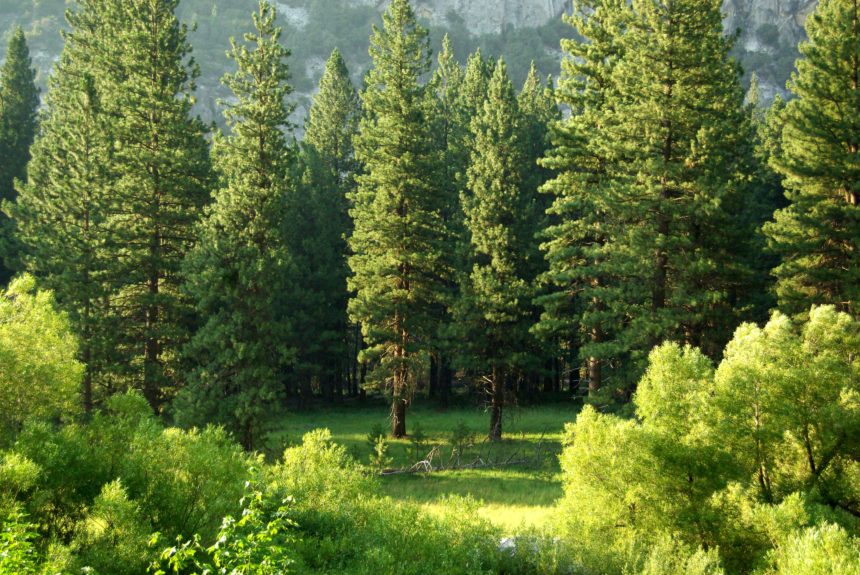When people think of natural climate solutions, they usually think of forests and trees, and that makes sense. Trees sequester enormous amounts of carbon dioxide. They lower greenhouse gas emissions, improve our air quality, and even enhance mental well-being.
Currently, around five million hectares of trees are deforested globally each year, mostly in tropical regions. Meanwhile, the U.S. loses thousands of acres of forest each year to wildfires. To reverse this trend, the United States and other partners should make a concerted effort at both forest restoration and tree planting initiatives. By streamlining government regulation and policy, while empowering private sector participation, the United States can lead the world in forest restoration and tree planting.
Fact vs. Myth
- Fact. Deforestation accounts for 8% to 10% of global emissions increases each year.
- Myth. The United States has failed to prevent domestic deforestation.
- The net rate of intentional deforestation in the United States and Canada has been “essentially zero for decades.”
- Fact. By implementing reforestation along with other mitigation efforts, we can successfully reduce atmospheric emissions.
The Importance of Forest Restoration
- Forest restoration is beneficial to the environment.
- Forests improve water quality by minimizing soil erosion and subsequent runoff.
- Trees also improve air quality by filtering pollutants out of the air we breathe.
- Forest restoration sequesters carbon dioxide from the atmosphere.
- In 2018, global tree cover removed 37.1 metric tons of CO2 from the atmosphere.
- The 766 million acres of forestland in the United States removes around 16% of American emissions per year.
- A 2019 report from the National Sustainable Agriculture Coalition stated: “Best soil health management on the world’s agricultural lands plus reforestation of idle and depleted lands could reduce atmospheric CO2 in the year 2100 by 156 ppm.”
- Forest restoration improves mental well-being.
- Conservation and tree restoration projects foster increased community engagement, according to the U.S. Forest Service (USFS).
- Studies have shown that trees improve mood, mental health, and even decrease crime in urban areas.
Markets vs Mandates
- Private landowners play a huge role in implementing restorative practices, as they own 56% of American forestland.
- The private sector is already a leader in reforestation efforts.
- In 2020, the Arbor Day Foundation replanted more than 21 million trees.
- Blue Forest’s Forest Resiliency Bond connects investors and local communities to make forest restoration efforts more accessible.
- The Northern Arizona Forest Fund, a nonprofit organization, has raised more than $6.2 million for restoration projects since 2015.
- Overbearing government policies are harmful to forest restoration, wildfire prevention and conservation efforts.
- Permitting and litigation under the National Environmental Policy Act (NEPA) often hinder the deployment and increase the cost of restoration efforts on public land.
- Hands-off federal and state wildfire policies that prevent prescribed burns and underbrush removal make fires more intense and destructive, increasing forest loss.
How to Increase Forest Restoration Efforts
- Allow the U.S. Forest Service to make longer term conservation commitments.
- Currently the USFS is only allowed to financially commit to projects for the current appropriations cycle. By allowing the USFS to make long-term conservation commitments, more projects could receive funding and reach completion.
- Uphold and extend the 2020 updated CEQ NEPA modernization ruling to streamline government red tape on conservation projects.
- Implement prescribed burn and underbrush removal policies on federal lands.
- A report by the Society of American Foresters states that “numerous studies show that a policy of active and responsible forest management is more effective in capturing and storing atmospheric carbon than a policy of hands-off management that precludes periodic harvests and use of wood products.”
Summary
- Trees provide essential environmental benefits, including improved air and water quality.
- Trees are one of the most effective natural carbon sequestration tools.
- The private sector has been effective in implementing forest restoration efforts, but sometimes government policy gets in the way.
- By reducing red tape and encouraging private sector involvement, the United States can continue to be a shining example of forest conservation worldwide.


